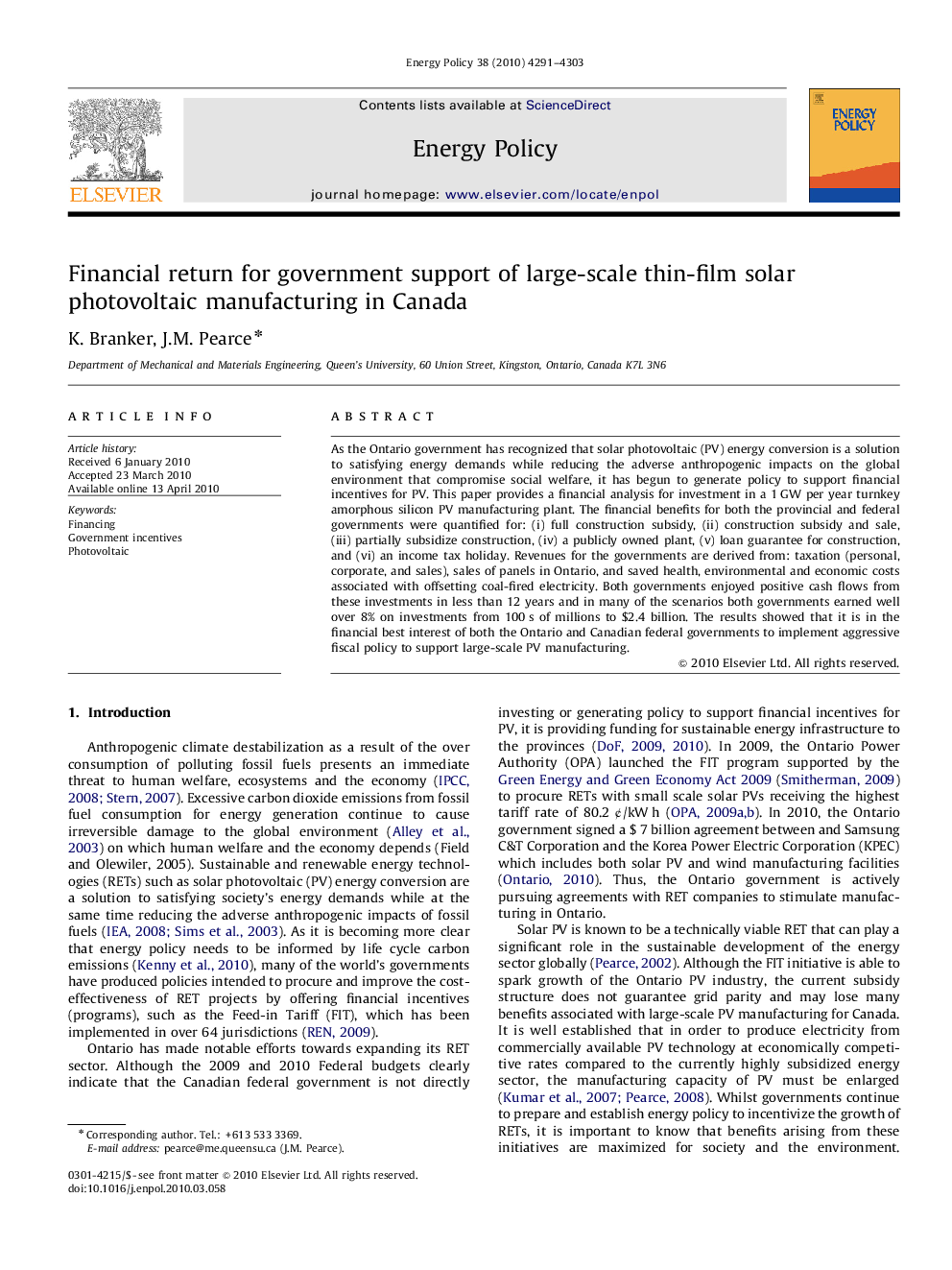| Article ID | Journal | Published Year | Pages | File Type |
|---|---|---|---|---|
| 996120 | Energy Policy | 2010 | 13 Pages |
As the Ontario government has recognized that solar photovoltaic (PV) energy conversion is a solution to satisfying energy demands while reducing the adverse anthropogenic impacts on the global environment that compromise social welfare, it has begun to generate policy to support financial incentives for PV. This paper provides a financial analysis for investment in a 1 GW per year turnkey amorphous silicon PV manufacturing plant. The financial benefits for both the provincial and federal governments were quantified for: (i) full construction subsidy, (ii) construction subsidy and sale, (iii) partially subsidize construction, (iv) a publicly owned plant, (v) loan guarantee for construction, and (vi) an income tax holiday. Revenues for the governments are derived from: taxation (personal, corporate, and sales), sales of panels in Ontario, and saved health, environmental and economic costs associated with offsetting coal-fired electricity. Both governments enjoyed positive cash flows from these investments in less than 12 years and in many of the scenarios both governments earned well over 8% on investments from 100 s of millions to $2.4 billion. The results showed that it is in the financial best interest of both the Ontario and Canadian federal governments to implement aggressive fiscal policy to support large-scale PV manufacturing.
